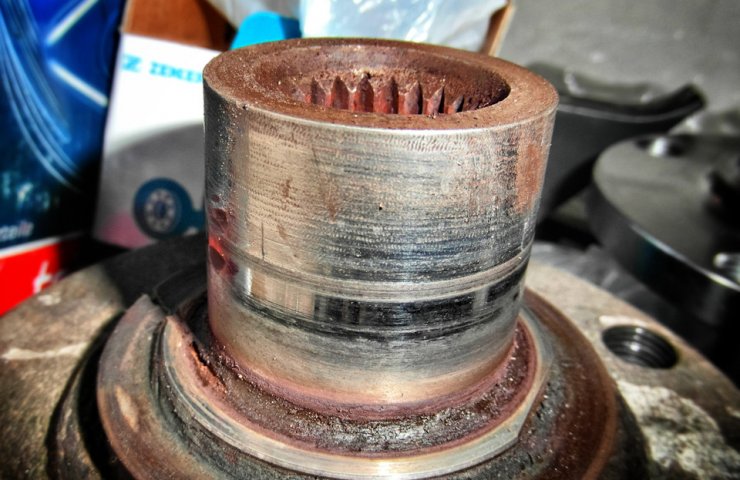Regardless of the fact that the bearing is imported or domestic, its service life depends on the quality, operating conditions and many other factors. Timely wear detection prevents damage to the entire rotating mechanism. There are a number of signs that make it easy to identify the appearance of a problem in a part. If at least one of them is diagnosed, it is time to bearing replace.
Signs of wear
Diagnostics of a technical product is carried out empirically. The beginning of a failure is indicated by the following signs:
- Loud rotating noise. When the cage, balls or rollers wear out, a loud hum is generated. Strengthening it occurs with an increase in the speed of the rotating unit.
- Heating is above acceptable parameters. An increase in the temperature of any operating unit is considered normal. However, when the bearing becomes hot in the hub, grease begins to flow out of it, the heating parameters are clearly exceeded. The next stage is its jamming, destruction of the separator.
- The appearance of backlash. The reason can be established with full access to the part. Use your fingers to swing the inner or outer ring. If there is a strong "dangling" of one of the elements in the vertical plane, the backlash exceeds the norm.
The fact that the replacement of the bearing is necessary due to its wear can be found out by visual inspection. The technical product has its own microrelief on the metal surface. When the movement of individual parts begins, they begin to rub against each other. Strong abrasion of the surface layer is expressed by the formation of depressions, microcracks.
Visible defects are other mechanical damages, which include corrosion, cracks in the cage, destruction of the separator. There should be no questions about how to check bearing wear. It is enough to examine it carefully. If the part worked without lubrication in an aggressive environment, it will even turn out to reveal signs of oxidation. On metal, they are visible as spots of a dark or other color, unusual for a natural shiny coating.
Service life when wheel bearings need to be replaced
The durability of a technical product means the number of revolutions or working hours that it makes before the first signs of destruction appear. The nominal service life is equal to the reliability level not less than 90% . The manufacturer's specified operating hours or millions of revolutions do not always match the rated life. In reality, the part works longer or less, depending on the operating conditions:
- If instead of the required two there is 1 bearing, due to increased load its rapid destruction occurs.
- Likewise, exceeding the recommended speed of rotation accelerates wear.
- Friction elements require constant lubrication to improve glide. Its absence, contamination with foreign solid particles accelerates destruction. A similar situation occurs when in contact with water, chemical liquids.
- Going to the store buy a bearing, price Should not be a significant factor in choosing a model. If, for example, a tapered type is needed, then you cannot replace with a less expensive ball version. Non-compliance with dimensions is inadmissible. The clips must match the diameter of the hub and shaft on which they are fitted.
If signs of wear appear, you need to immediately change the bearing, choosing an identical replacement for it in all characteristics. It is important to install a new part correctly without distortions. Do not hit hard with a hammer. If you need to diagnose a large number of bearings, it is optimal to purchase a device that determines the degree of wear with an accuracy of 90%.




